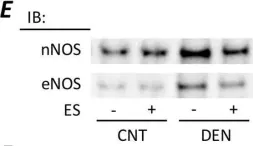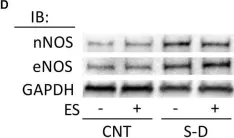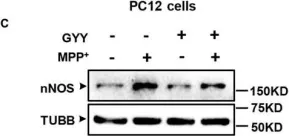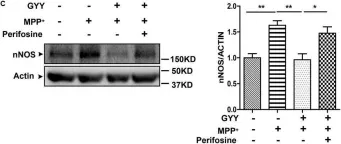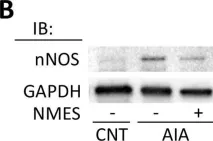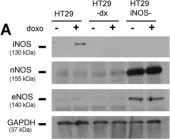The neural network of the enteric nervous system (ENS) underlies gastrointestinal functions. However, the molecular mechanisms involved in enteric neuronal connectivity are poorly characterized. Here, we studied the role of semaphorin 5A (Sema5A), previously characterized in the central nervous system, on ENS neuronal connectivity. Sema5A is linked to autism spectrum disorder (ASD), a neurodevelopmental disorder frequently associated with gastrointestinal comorbidities, and potentially associated with ENS impairments. This study investigated in rat enteric neuron cultures and gut explants the role of Sema5A on enteric neuron connectivity and the impact of ASD-associated mutations on Sema5A activity. Our findings demonstrated that Sema5A promoted axonal complexity and reduced functional connectivity in enteric neurons. Strikingly, the ASD-associated mutation S956G in Sema5A strongly affected these activities. This study identifies a critical role of Sema5A in the ENS as a regulator of neuronal connectivity that might be compromised in ASD.
© 2024 The Authors.
Product Citations: 63
In IScience on 17 May 2024 by Le Dréan, M. E., Le Berre-Scoul, C., et al.
-
Neuroscience
In Redox Biology on 1 December 2023 by Song, G., Wang, J., et al.
To investigate the therapeutic potential of dimethyl fumarate (DMF) in improving erectile function of bilateral cavernous nerve injury (BCNI) rats, along with elucidating its underlying mechanisms.
A BCNI rat model was established by clamping bilateral cavernous nerve (CN). DMF was given by gavage at low (20 mg/kg/day) and high (40 mg/kg/day) dosages for a duration of 4 weeks. Erectile function was assessed by electrical stimulation of CN. Penis and CN tissues were collected for subsequent analysis. Additionally, PC-12 cell line was used to verify the mechanism of DMF in vitro. Nfe2l2 or Ho-1 gene knockdown PC-12 cell lines were constructed by lentiviral transfection, respectively. A damaged cell model was induced using H2O2. And then molecular biological methods were employed to analyze cellular molecules and proteins.
DMF administration for 4 weeks led to improvements in erectile function, reduced fibrosis of penis corpus cavernosum in BCNI rats. The morphology of CN was improved and the number of nerve fibers increased. Furthermore, the levels of nNOS, NO, and cGMP were increased, while Ca2+ was decreased in penis corpus cavernosum. Notably, the levels of ROS, 3-NT and NLRP3 inflammasomes production were reduced, alongside increased expression of Nrf2 and HO-1 proteins in the dorsal penile nerve (DPN) and CN. In vitro, DMF increased cell viability, reduced ROS level, promoted SOD, diminished 3-NT, MDA and DNA damage markers, and inhibited the activation of NLRP3 inflammasomes in H2O2 induced PC-12 cells. Nfe2l2 knockdown and Ho-1 knockdown significantly attenuated the protective effect of DMF, respectively. Furthermore, inhibition of ROS production by N-acetylcysteine led to a reduction in NLRP3 inflammasome activation in H2O2 induced PC-12 cells.
DMF improved erectile function of BCNI rats by protecting nerves through inhibiting oxidative stress and the activation of NLRP3 inflammasome-mediated pyroptosis via activation of Nrf2/HO-1 pathway.
Copyright © 2023 The Authors. Published by Elsevier B.V. All rights reserved.
-
IHC-IF
-
Neuroscience
Biochemical mechanism of erastin-induced ferroptotic cell death in neuronal cells.
In Acta Biochimica et Biophysica Sinica on 30 May 2023 by Hou, M. J., Wang, P., et al.
Ferroptosis is a new form of nonapoptotic cell death closely associated with glutathione (GSH) peroxidase 4 inhibition and/or GSH depletion, resulting in the accumulation of cellular iron and lipid peroxides. The exact mechanism by which GSH depletion causes the accumulation of reactive oxygen species (ROS) and lipid-ROS and subsequent ferroptotic cell death in neuronal cells remains unclear. In the present study, using immortalized HT22 mouse hippocampal neuronal cells as a model, we show that nitric oxide (NO) accumulation via protein disulfide isomerase (PDI)-mediated neuronal nitric oxide synthase (nNOS) activation plays a critical role in chemically-induced ferroptosis. Mechanistically, we find that erastin-induced GSH depletion leads to activation of PDI, which then mediates ferroptosis by catalyzing nNOS dimerization, followed by accumulation of cellular NO, ROS and lipid ROS and ultimately ferroptotic cell death. Pharmacological inhibition of PDI enzymatic activity or selective PDI knockdown can effectively abrogate erastin-induced ferroptosis in HT22 cells. The results of this study reveal an important role of PDI in mediating chemically induced ferroptosis in a neuronal cell model, and PDI may serve as a potential drug target for protection against GSH depletion-associated ferroptotic neuronal cell death.
-
Mus musculus (House mouse)
-
Biochemistry and Molecular biology
In Nutrients on 16 May 2023 by Hu, G., Xu, L., et al.
Chronic exercise (Ex) exerts antihypertensive and renoprotective effects in rats fed a high fructose diet (HFr). To elucidate the mechanisms, the impacts of an HFr and Ex on the nitric oxide (NO) system and oxidative stress in the kidney were examined. Rats were fed a control diet or an HFr, and a part of the HFr-fed rats underwent treadmill running for 12 weeks. The HFr did not affect nitrate/nitrite (NOx) levels in plasma and urine, and Ex increased the NOx levels. The HFr increased thiobarbituric acid reactive substance (TBARS) levels in plasma and urine, and Ex decreased the HFr-increased TBARS levels in plasma. The HFr increased the neuronal and endothelial NO synthase (nNOS and eNOS) expressions, and Ex enhanced the HFr-increased eNOS expression. The HFr inhibited the eNOS phosphorylation at serine 1177, and Ex restored the HFr-inhibited eNOS phosphorylation. The HFr increased xanthine oxidase and NADPH oxidase activities, and Ex restored the HFr-increased xanthine oxidase activity but enhanced the HFr-increased NADPH oxidase activity. The HFr increased the nitrotyrosine levels, and Ex attenuated the HFr-increased levels. These results indicate that although Ex enhances the HFr-increased eNOS expression and NADPH oxidase activity, an HFr inhibits renal eNOS phosphorylation and NO bioavailability, whereas Ex ameliorates them.
-
WB
-
Rattus norvegicus (Rat)
In Frontiers in Neuroscience on 4 March 2023 by Blin, J., Gautier, C., et al.
Repeated acute stress (RASt) is known to be associated with gastrointestinal dysfunctions. However, the mechanisms underlying these effects have not yet been fully understood. While glucocorticoids are clearly identified as stress hormones, their involvement in RASt-induced gut dysfunctions remains unclear, as does the function of glucocorticoid receptors (GR). The aim of our study was to evaluate the involvement of GR on RASt-induced changes in gut motility, particularly through the enteric nervous system (ENS).
Using a murine water avoidance stress (WAS) model, we characterized the impact of RASt upon the ENS phenotype and colonic motility. We then evaluated the expression of glucocorticoid receptors in the ENS and their functional impact upon RASt-induced changes in ENS phenotype and motor response.
We showed that GR were expressed in myenteric neurons in the distal colon under basal conditions, and that RASt enhanced their nuclear translocation. RASt increased the proportion of ChAT-immunoreactive neurons, the tissue concentration of acetylcholine and enhanced cholinergic neuromuscular transmission as compared to controls. Finally, we showed that a GR-specific antagonist (CORT108297) prevented the increase of acetylcholine colonic tissue level and in vivo colonic motility.
Our study suggests that RASt-induced functional changes in motility are, at least partly, due to a GR-dependent enhanced cholinergic component in the ENS.
Copyright © 2023 Blin, Gautier, Aubert, Durand, Oullier, Aymeric, Naveilhan, Masson, Neunlist and Bach-Ngohou.
-
IHC-IF
-
Mus musculus (House mouse)
-
Neuroscience
In PLoS One on 10 October 2019 by Yamada, T., Ashida, Y., et al.
Fig.4.E

-
WB
-
Collected and cropped from PLoS One by CiteAb, provided under a CC-BY license
Image 1 of 10
In Front Physiol on 9 January 2019 by Monsalvo-Villegas, A., Osornio-Garduño, D. S., et al.
Fig.7.B

-
WB
-
Rattus norvegicus (Rat)
Collected and cropped from Front Physiol by CiteAb, provided under a CC-BY license
Image 1 of 10
In Front Physiol on 28 August 2018 by Yamada, T., Himori, K., et al.
Fig.6.A

-
WB
-
Rattus norvegicus (Rat)
Collected and cropped from Front Physiol by CiteAb, provided under a CC-BY license
Image 1 of 10
In Front Physiol on 28 August 2018 by Yamada, T., Himori, K., et al.
Fig.6.D

-
WB
-
Rattus norvegicus (Rat)
Collected and cropped from Front Physiol by CiteAb, provided under a CC-BY license
Image 1 of 10
In Front Pharmacol on 23 November 2017 by Hou, X., Yuan, Y., et al.
Fig.4.B

-
WB
-
Mus musculus (House mouse)
Collected and cropped from Front Pharmacol by CiteAb, provided under a CC-BY license
Image 1 of 10
In Front Pharmacol on 23 November 2017 by Hou, X., Yuan, Y., et al.
Fig.4.C

-
WB
-
Mus musculus (House mouse)
Collected and cropped from Front Pharmacol by CiteAb, provided under a CC-BY license
Image 1 of 10
In Front Pharmacol on 23 November 2017 by Hou, X., Yuan, Y., et al.
Fig.5.C

-
WB
-
Mus musculus (House mouse)
Collected and cropped from Front Pharmacol by CiteAb, provided under a CC-BY license
Image 1 of 10
In PLoS One on 22 June 2017 by Himori, K., Tatebayashi, D., et al.
Fig.4.B

-
WB
-
Collected and cropped from PLoS One by CiteAb, provided under a CC-BY license
Image 1 of 10
In PLoS One on 1 September 2012 by Johnson, E. K., Zhang, L., et al.
Fig.2.A

-
WB
-
Collected and cropped from PLoS One by CiteAb, provided under a CC-BY license
Image 1 of 10
In Mol Cancer on 19 November 2009 by De Boo, S., Kopecka, J., et al.
Fig.1.A

-
WB
-
Homo sapiens (Human)
Collected and cropped from Mol Cancer by CiteAb, provided under a CC-BY license
Image 1 of 10
